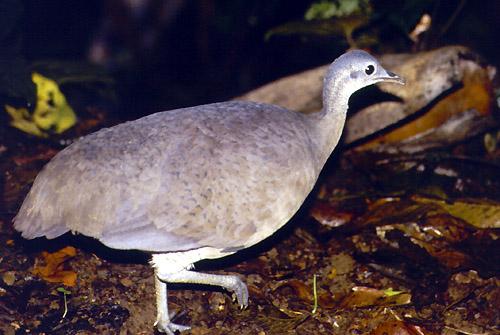Tinamou - Great
Scientific Name: Tinamus major
Tue, 29th April, 2025 - 3:59 pm GMT
Sponsor Ads:

Alternative Name
Scientific Name: Tinamus majorBasic Info
The Tinamou is a unique looking bird, one with visual similarities to the common Quail. They have a huge variety of sizes, and can be found weighing anywhere from five measly ounces to a much larger and heavier four pounds. With the weight difference, obviously comes a physical size difference, and a large range of Tinamous, each larger or smaller than the last, can be found across the South American Rainforest. They have thick, rounded bodies and are known for their highly developed tail feathers. A few species have crests, thus the resemblance to the common Quail. They have seriously underdeveloped wings, hence the short flight time, but they are not underdeveloped enough to completely prevent flight; just enough to classify them as ratites.
Health
Breeding The Tinamou has an odd reproduction system. The male will build a little nest, usually just a small hole in the ground, and jealously guard it from anyone looking to interrupt the mating and birthing process. The female will lay a massive clutch of eggs, sometimes reaching numbers of up to 16 or more, laying eggs in fantastic colors like purple and light black. If the colors did not wash out when they were exposed to ultraviolet light, they would be truly beautiful to behold. The male of the mating couple will then sit on the eggs for around 20 days, hatching them with the innate ability to run from predators.Habitat
N/ABehavior
One of the few birds that fall into the Ratite category that can still manage to fly a few yards, the Tinamou is a truly exotic bird. Although not low in numbers, the Tinamou is rapidly reaching the stage where protection certainly needs to be considered. Classified among other ratites, i.e. birds that cannot fly, like the Ostrich and the Emu, the Tinamou can actually manage to make it off the ground and glide a few thousand yards. When they are in danger, from either a rampaging predator or a hunter, the Tinamou will flee, with a quick burst of speed. Some species can even fly a little bit, but their range is very short and they will not get very far overall. The Tinamou will occasionally trip over itself and fall from exhaustion. They defend themselves by camouflaging their appearence. Since they live primarily in the Rainforest, the Tinamou protects itself by hiding among the bushes and letting the predator pass them by. A few varieties will make shelter in tree branches, but for the most part, the Tinamou prefers to sleep where it spends most of its time, on the ground.Origin
South America and MexicoHistory
The Tinamou is active mostly during the day, sleeping under the safe haven of the Rainforest canopy at night. They blend in with the Rainforest well, sporting the deep earth tones that the Rainforest naturally produces.Common Foods
The diet of the Tinamou changes according to the season. During the hot summer months, when insects are abundant in the Rainforest, that is what this little bird feeds on; delicious insects that are numerous. In the winter months, when these insects typSponsor Ads:
Occupying a third place in human intellectual culture, computing is not bound by the need to describe what does exist (as in natural science) or what can be built in the real world (as in engineering). -- John Crowcroft, Communications of the ACM, Vol 48. No. 2
Tinamou - Great
Coded by: BGID® | ALL RIGHTS RESERVED Copyright © 2000-2025
Disclaimer | Privacy | Report Errors / Contact | Credits








 Preparing For China. China is growing their military. China Military Technology - can it keep up with the US?
Preparing For China. China is growing their military. China Military Technology - can it keep up with the US?  versus
versus 

 versus
versus 
 This Thread is about the North Korean Military itself - the kind of army, navy, and air force they have.
This Thread is about the North Korean Military itself - the kind of army, navy, and air force they have. 
 versus
versus 
 versus
versus  versus
versus